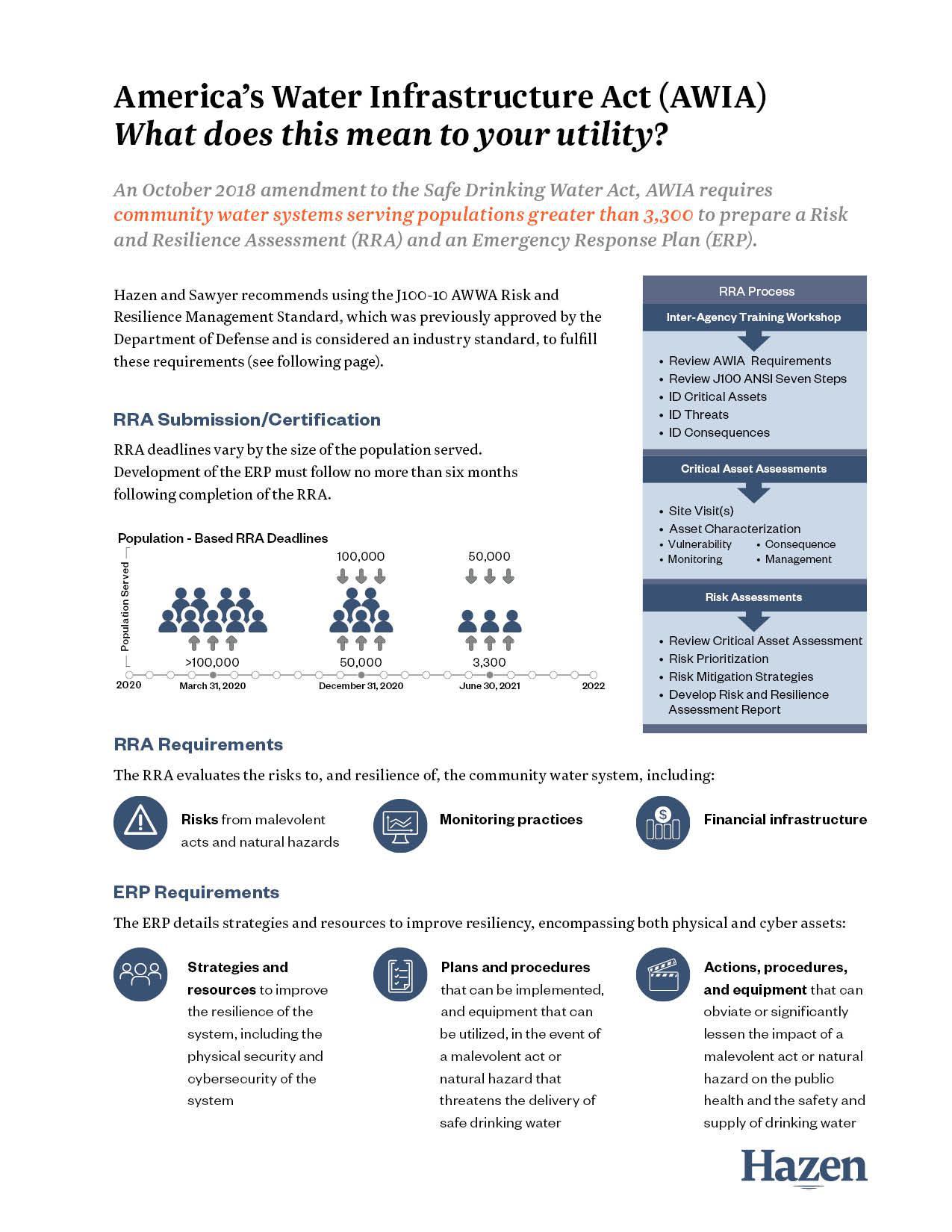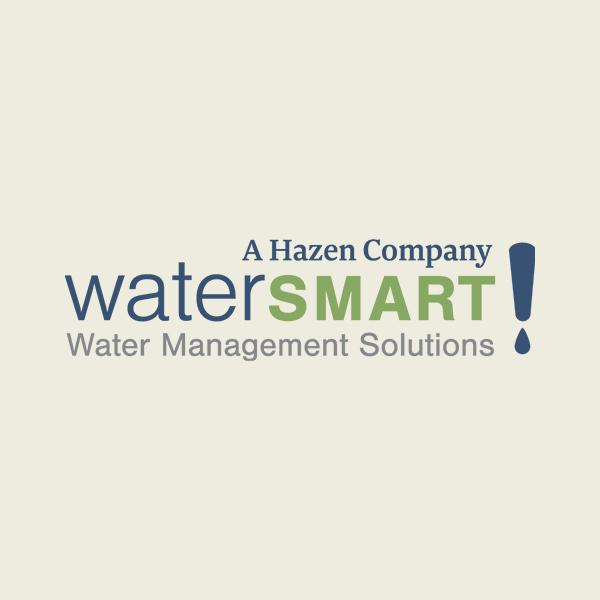The Water Infrastructure Act of 2018
What Does it Mean for Your Utility?
Section 1433 of the Safe Drinking Water Act was amended in October 2018 to include “America’s Water Infrastructure Act of 2018,” which requires all community water systems serving populations exceeding 3,300 persons to complete a Risk and Resiliency Assessment (RRA) of the water infrastructure and then certify to the Administrator of the Environmental Protection Agency (EPA) that these assessments were completed.
Within six months of completion of the RRA, the utilities must also prepare (or update as necessary) an Emergency Response Plan (ERP) and implement mitigation measures for the shortcomings and/or deficiencies (if any) identified under the RRA.
What the AIWA Means
Hazen's approach to developing the necessary risk assessments and emergency plans to address America’s Water Infrastructure Act of 2018.

RRA Requirements
The RRA evaluates the risks to, and resilience of, the community water system. Such an assessment must include the following:
- The risk to the system from malevolent acts and natural hazards.
- The resilience of the pipes and constructed conveyances, physical barriers, source water, water collection and intake, pretreatment, treatment, storage and distribution facilities, electronic, computer, or other automated systems (including the security of such systems) which are utilized by the system.
- The monitoring practices of the system.
- The financial infrastructure of the system.
- The use, storage, or handling of various chemicals by the system.
- The operation and maintenance of the system.
- Also may include an evaluation of capital and operational needs for risk and resilience management for the system.
ERP Requirements
The ERP is to be completed within six months of completion of the RRA and include the following:
- Strategies and resources to improve the resilience of the system, including the physical security and cybersecurity of the system.
- Plans and procedures that can be implemented, and identification of equipment that can be utilized, in the event of a malevolent act or natural hazard that threatens the ability of the community water system to deliver safe drinking water.
- Actions, procedures, and equipment which can obviate or significantly lessen the impact of a malevolent act or natural hazard on the public health and the safety and supply of drinking water provided to communities and individuals, including the development of alternative source water options, relocation of water intakes, and construction of flood protection barriers.
- Strategies that can be used to aid in the detection of malevolent acts or natural hazards that threaten the security or resilience of the system.
The Hazen Approach
Since the AWIA does not specify the methodology to be used in developing the RRA/ERP, we recommend using the J100-10 AWWA Risk and Resilience Management Standard, which was previously approved by the Department of Defense and is considered an industry standard. Hazen emergency preparedness experts across the firm have used this method to help utilities assess risk and develop emergency response plans for decades.
The first step is to evaluate the information already available:
- Can your Vulnerability Assessment be located? The Vulnerability Assessment was performed to comply with the 2002 Bioterrorism Act.
- When was it last updated?
- What resiliency testing has the system undergone previously?
These answers can help form the basis of the updated RRA. This new AWIA ERP will, in many cases, evolve from existing documents. It may be that it aggregates ERPs previously developed to provide a response framework for additional threats and risk scenarios.
This AIWA one pager summarizes the new legislation, the requirements and deadlines for utilities of various sizes, and our recommended approach for compliance.
Decades of experience assessing and managing risk for water utilities of all sizes enables Hazen to efficiently and thoroughly evaluate all risks a water utility could experience and support development of a holistic management plan that will increase the resilience of the entire system.







